Histosols are soils that are composed mainly of organic materials. They contain at least 20-30% organic matter by weight and are more than 40 cm thick. Histosols typically form in settings where poor drainage inhibits the decomposition of plant and animal remains, allowing these organic materials to accumulate over time. Histosols are often referred to as peats and mucks. Histosols are soils that form in decaying organic matter. In low, wet places, like the bogs shown or the marshes below, organic matter accumulates below the water table and decomposes more slowly than it accumulates.
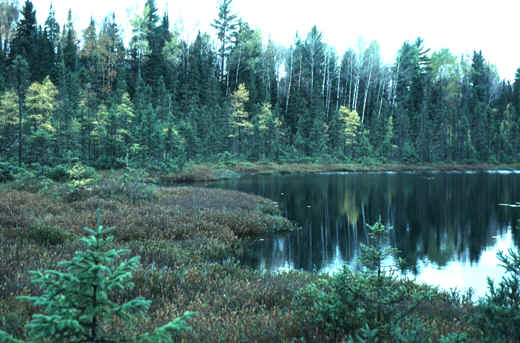
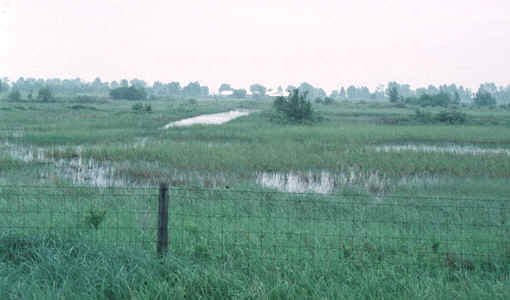
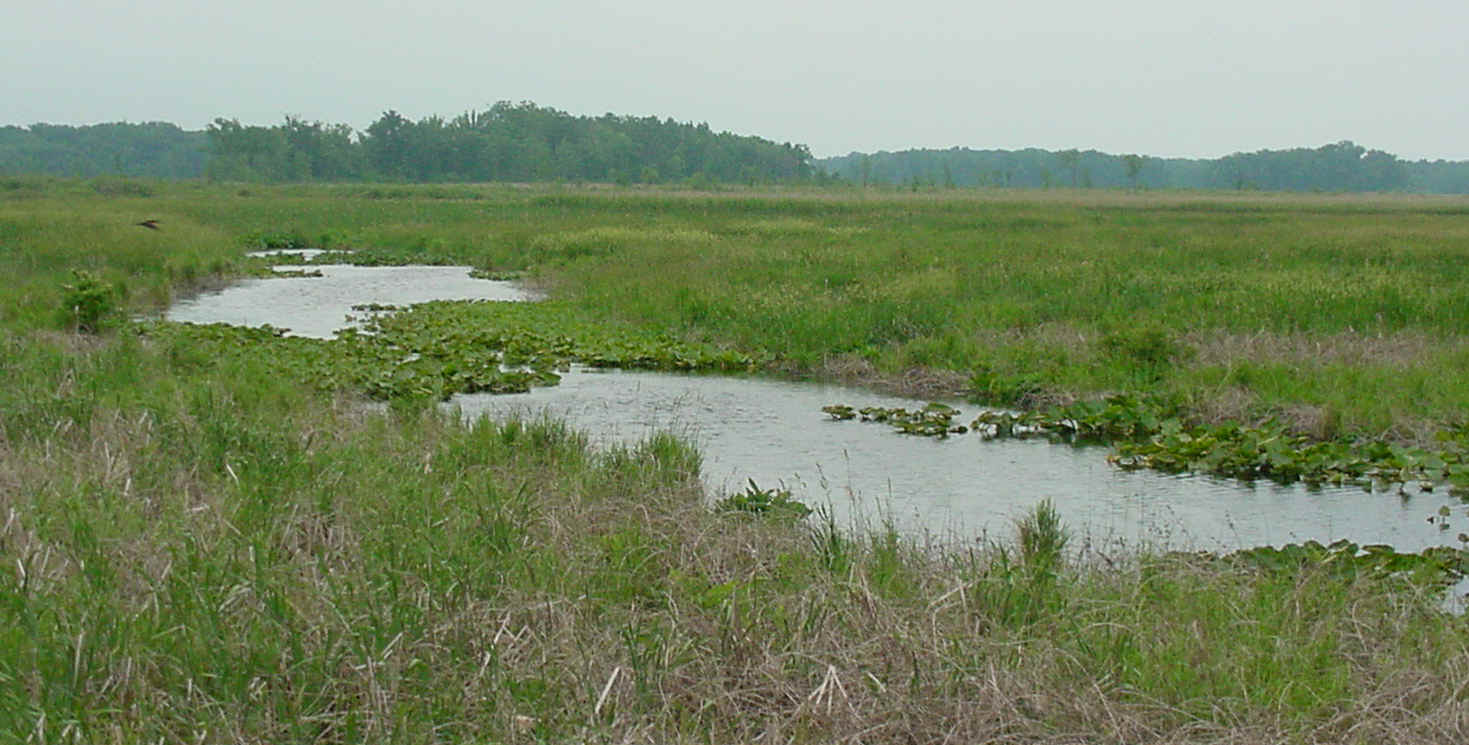
Over time, thick accumulations of this material can form. The pond excavation below shows such an accumulation of muck. The gray material at the base of the pit is the sand that underlies it.
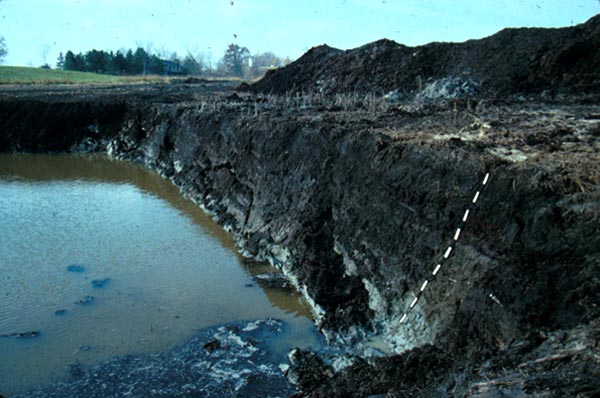
Peat is the name given to slightly decomposed organic material in soil, while muck is used
for the rotten, highly decomposed material. Muck is often black in color, and slimy
to the touch. Note the soil profile below, in which about 50 cm of muck overlies
gray sand. Note also the shallow water table.
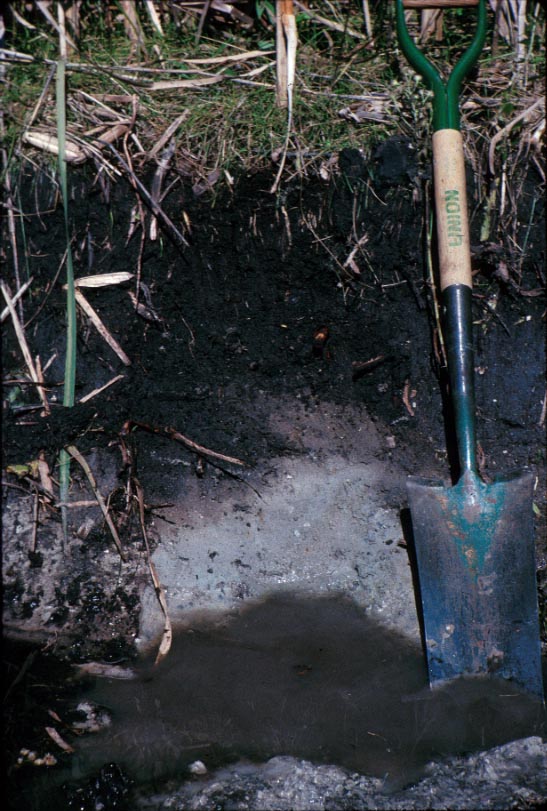
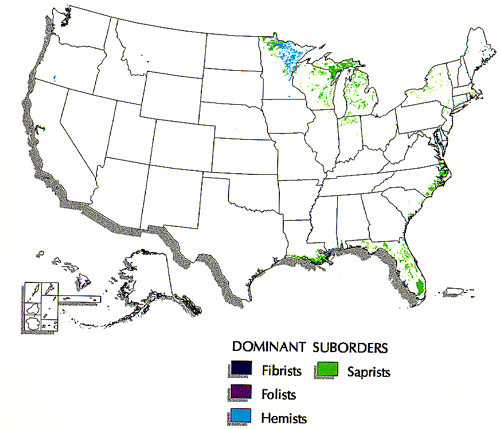
Histosols are scattered throughout both the Upper and the Lower Peninsula. They are found
in marshy areas with a thick vegetation that does not decompose completely, and much of
the soil consists of undecayed vegetable matter or peat. These soils are chiefly found in
lacustrine areas that were covered with water or were drainage channels during the glacial
period. In some places, depressions were filled with shallow lakes, and these have
overgrown with vegetation and gradually changed from lake to swamp to organic soil.
HISTOSOLS IN THE GREAT LAKES
REGION
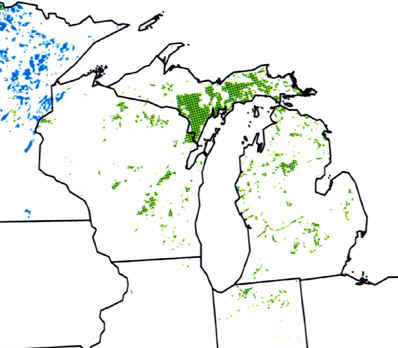

Histosols occur on young landscapes where there are lots of wetlands. Young,
recently-deglaciated landscapes like those in Michigan therefore contain lots of wetlands,
and in these Histosols form. Nearly 1/7 of Michigan's land surface is underlain by
Histosols, as the map above shows.
Saprists are Histosols that are mostly muck, and dominate the Michigan
landscape. Hemists contain material that is more like peat (i.e., less decomposed).
Notice that the Hemists are located in the cooler parts of the Great Lakes region,
where decomposition of the organic materials is slowed.
Histosols have many uses, although most remain today in undrained wetlands. Here
they serve as important habitat for wetland plants and animals, and serve as carbon
reservoirs. Nonetheless, humans have found ways to drain such wetlands and use the
Histosols.
The peat that has accumulated in the drift depressions
and glacial lake beds is used for fuel, potting soil, litter, in greenhouses and for
packing.
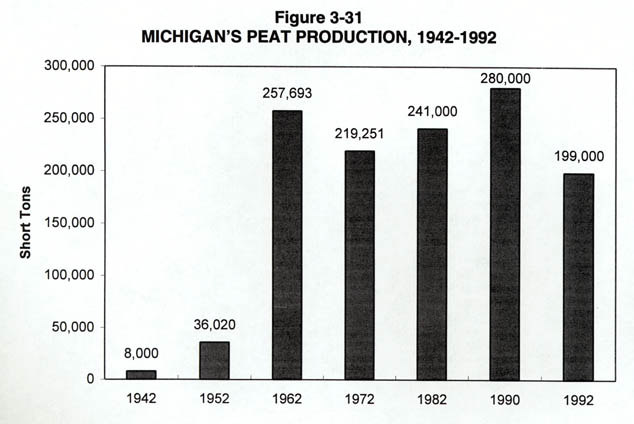
One important use is as a growing medium (often, potting soil). The Histosol
landscapes are first drained, and the muck mined, much as you would mine gravel from a
gravel pit. The muck is then piled up in huge piles to "dry" (see below).
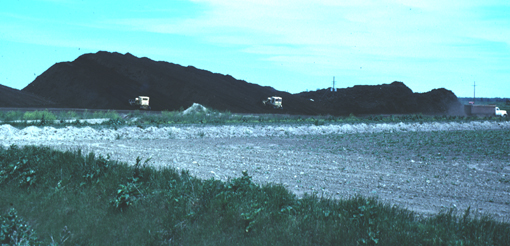
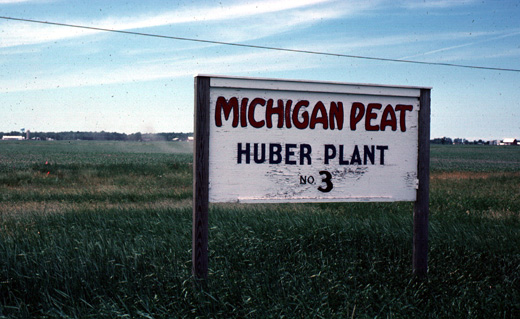
Eventually, the muck is bagged and sold as "soil".
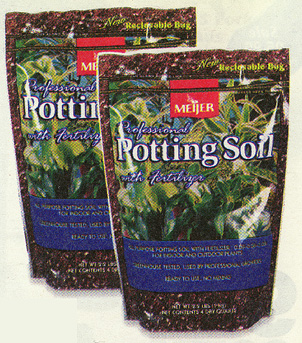
Another major use of Histosols is as a growing medium in place (i.e., the soil is not
removed, instead, plants are grown on the mucks). In order to grow crops on mucks,
the land must first be drained. Usually this involves digging deep drainage ditches,
installing underground drainage tile (perforated pipes) into the muck, and then pumping
the water from the drain tile into the ditches (see below). Once in the ditches, the
water can drain away and the muck landscape is dry.
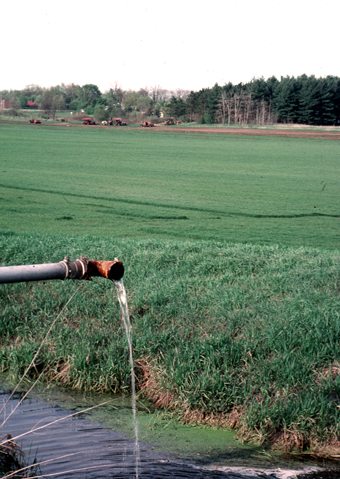
As is shown in the image above and the one below, growing sod, or turf, is a popular land
use on mucks.
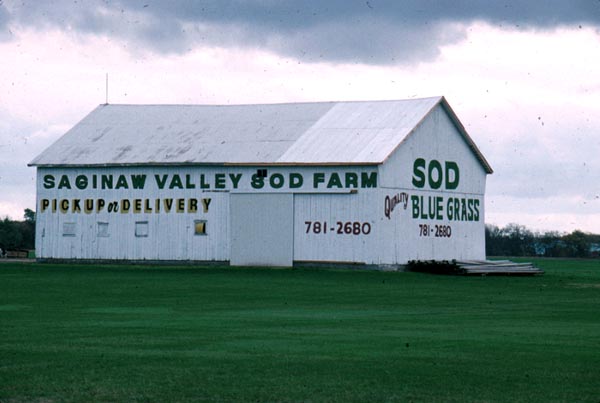
Histosols are fertile, and therefore grow turf very readily. Because the muck is
organic and not mineral, "peeling" the turf off and rolling it up into rolls for
shipment is easy.
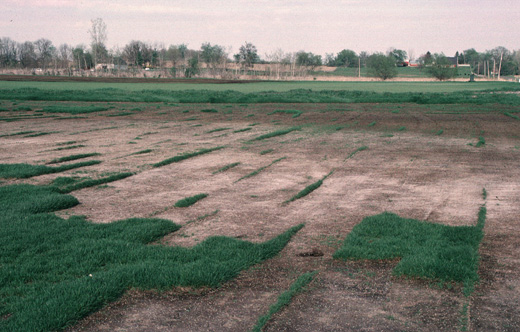
Of course, every time a layer of sod is removed from the field (about once every two
years), some of the muck is lost, and the soil "resource" is diminished.
Eventually, the field gets lower and lower, and wetter and wetter, as is shown below.
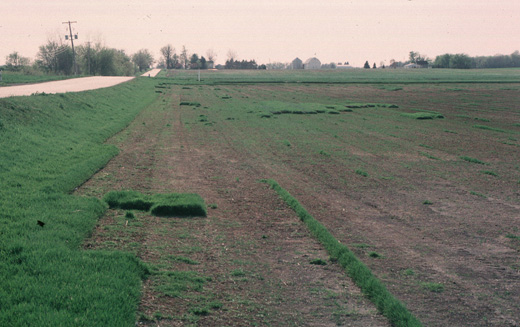
Ultimately, the field must be abandoned, either because the muck has been mined away and
only the underlying clay or sand remains, or because it is too low and wet.
This type of soil is very poorly drained and can be cultivated only if artificially
drained. When a sandy peat is drained, the soil often becomes very light and is subject to
erosion by the wind, so rows of willow trees or bushes are often planted in strategic
places on the borders of these fields to act as windbreaks. Often, such soil must be
irrigated to offset the rapid loss of moisture during the summer.
Finally, organic soils are heavy producers of vegetables and other specialized
crops (such as mint) in Michigan. Many of our
vegetables are grown on drained Histosols. Note the head lettuce being grown on deep
muck (below). Histosols are particularly adapted to vegetables not only because of
their inherent fertility, but because the soil is very loose and roots can develop in them
quite easily. Note also (below) that these mucks must usually be irrigated, since
they do not hold much water, and the water table has been lowered by artificial drainage.
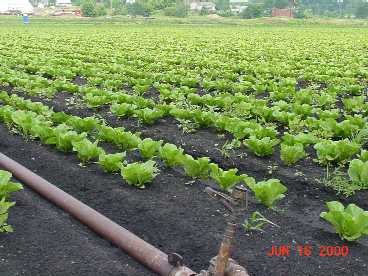
Click here for full size image (272 kb)
Go here to learn more about crops grown on mucks.
Parts of the text on this page have been modified from L.M. Sommers' book entitled, "Michigan: A Geography".
This material has been compiled for educational use only, and
may not be reproduced without permission. One copy may be printed for
personal use. Please contact Randall Schaetzl (soils@msu.edu)
for more information or permissions.